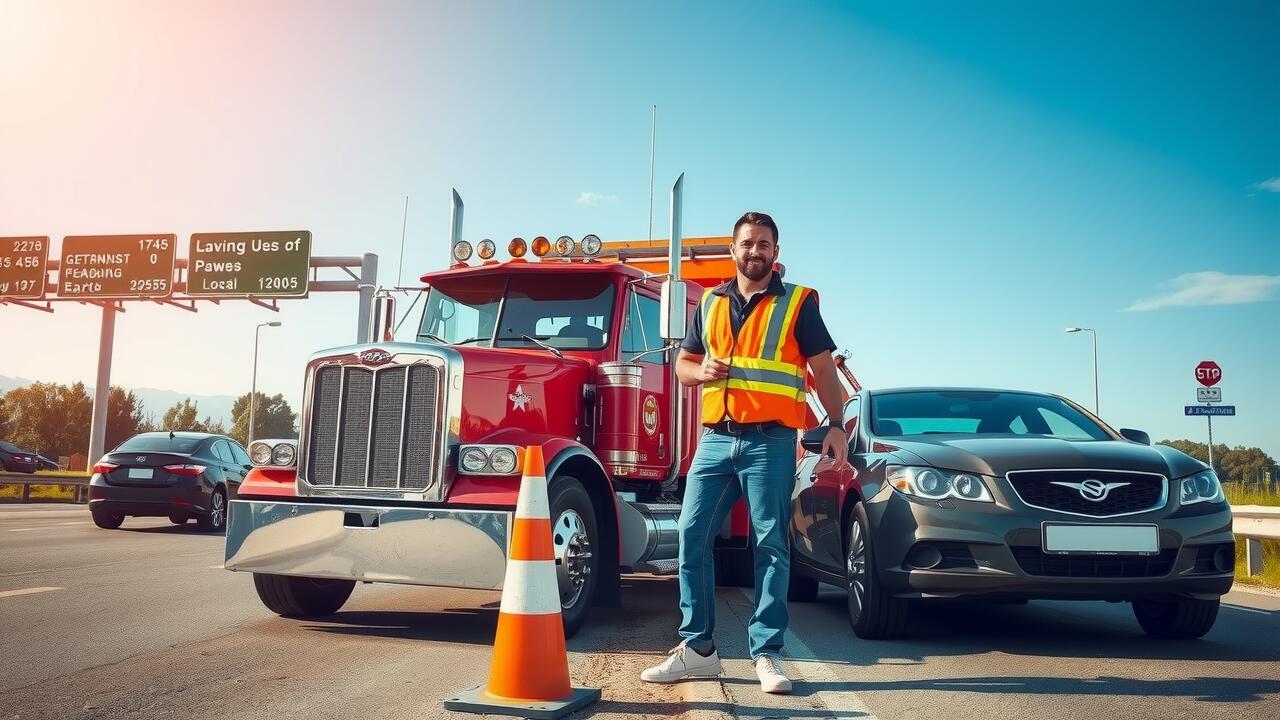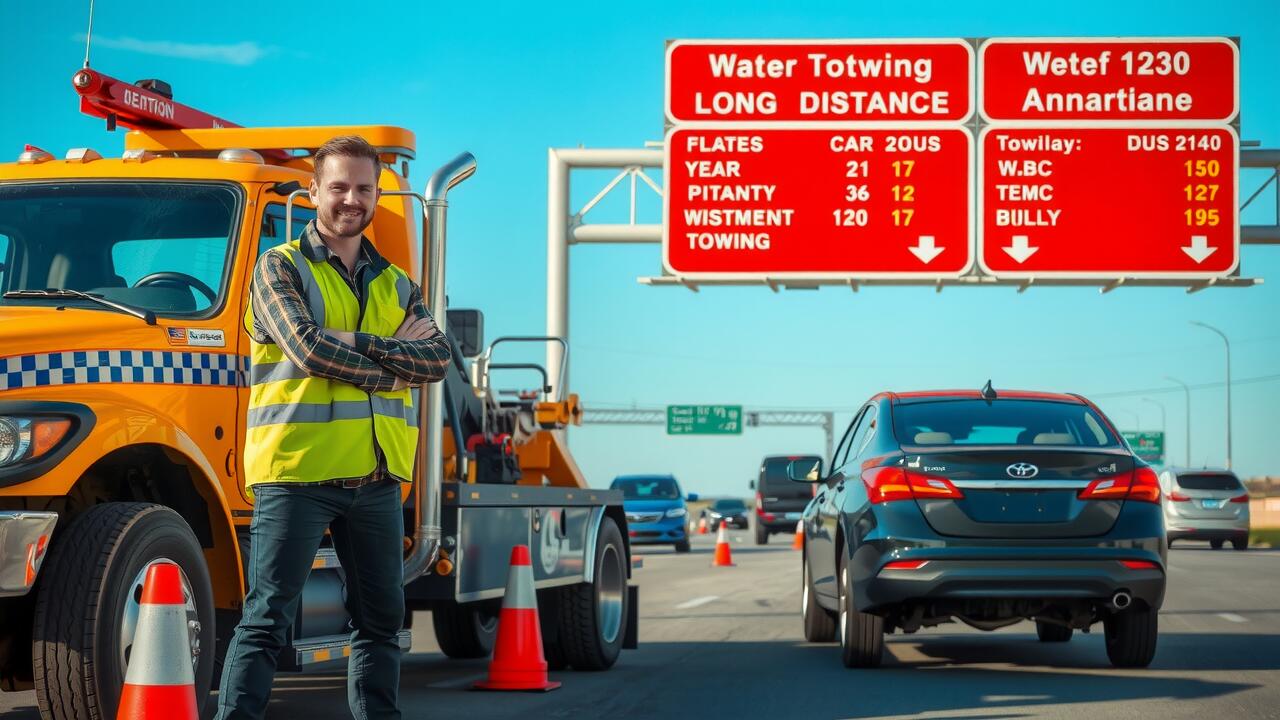
Towing Equipment and Accessories
Towing requires reliable equipment and accessories designed for safety and efficiency. Essential items include hitches, tow bars, and weight distribution systems. The correct hitch is crucial for ensuring that the load is secure during transport, whether for local or long distance towing. Additionally, safety chains and braking systems can significantly enhance overall towing performance, providing extra security on the road.
Accessories like towing mirrors and brake controllers also contribute to a safer towing experience. Towing mirrors expand visibility, allowing drivers to see beyond the trailer's width. Brake controllers help synchronize the brakes of the tow vehicle and the trailer, which is especially important for heavier loads. Investing in quality towing equipment ensures that you are well-prepared for various towing scenarios, whether you are embarking on local or long distance towing ventures.
Tools That Enhance Towing Capability
Various tools and accessories can significantly enhance towing capabilities, ensuring both safety and efficiency. Weight distribution hitches help to evenly distribute the trailer's weight across the towing vehicle. This adjustment minimizes strain on the vehicle's rear axle and improves handling. Additionally, stabilizer bars work to reduce sway, increasing stability during transport. When towing, these tools play a crucial role in maintaining control, particularly for local and long distance towing scenarios.
Brake controllers are essential when engaging with heavy loads. These devices synchronize the trailer's brakes with those of the towing vehicle, providing a smoother braking experience. This synchronization is particularly important for longer hauls where stopping distances increase. Other helpful accessories include towing mirrors, which expand visibility, ensuring you can see any obstacles or trailers behind you. With these tools, drivers are better equipped to navigate the challenges presented by local and long distance towing.
Driving Conditions
Driving conditions play a significant role in determining the maximum towing distance one can safely achieve. Factors such as road quality, incline, and traffic can greatly influence towing performance and the overall safety of the journey. When hauling large loads, drivers need to be mindful of potential challenges that can arise from poorly maintained roads or unexpected traffic congestion. Local and long distance towing often require different approaches due to variations in these conditions.
Weather conditions also contribute to how effectively a vehicle can tow. Rain, snow, or ice can affect traction and braking, necessitating more cautious driving to ensure safety. Extreme heat can impact engine performance and reduce the efficiency of cooling systems. For those engaged in local and long distance towing, evaluating weather forecasts and adjusting plans accordingly can enhance safety and improve the overall towing experience.
Effects of Weather on Towing Performance
Weather conditions can significantly impact towing performance. Rain, snow, and ice reduce traction on the road, making it more difficult for both the towing vehicle and the trailer to maintain control. Drivers may experience longer stopping distances, requiring a more cautious approach to braking. In such conditions, the weight of the load being towed adds further complexity, as it can lead to swaying and instability, particularly during sharp turns. Local and long distance towing demands heightened awareness of these factors and how they can change the dynamics of a towing experience.
Wind can also play a crucial role in towing scenarios. Strong gusts can push a trailer off-course, especially if it has a high profile. This unpredictability can lead to challenges in steering and maintaining a straight path. Drivers should consider wind forecasts before heading out, as high winds may require adjustments to speed or even choosing an alternate route. Successful local and long distance towing implies being prepared for varying weather conditions and knowing how to adapt to them to ensure safety on the road.
Legal Regulations for Towing
When engaging in any towing operation, understanding the legal regulations that govern both local and long distance towing is crucial. Each state has its own set of rules regarding maximum towing capacity, required equipment, and safety standards. These regulations can dictate specifics such as the type and size of trailers permissible on public roads, as well as the licensing requirements for operators. Failing to adhere to these laws can result in penalties or fines, as well as increased liability in the event of an accident.
Additionally, some regions may enforce restrictions based on the weight of the loaded trailer or the type of vehicle being used for towing. It’s important to check state-specific towing laws before embarking on a journey, as these regulations can vary widely. Understanding your obligations not only ensures compliance but also helps promote safety on the road. Both local and long distance towing require due diligence in confirming that all equipment used meets legal standards. Ignoring these guidelines can lead to significant risks for drivers and other road users alike.
Understanding State-Specific Towing Laws
Towing regulations can vary significantly from state to state. These laws often establish guidelines concerning the maximum weight a vehicle can tow, the required safety equipment, and licensing requirements for the operator. Drivers engaged in Local and Long Distance Towing should familiarize themselves with these specific laws to avoid fines or accidents. Understanding vehicle classifications is crucial as well, as different rules may apply to passenger vehicles compared to commercial trucks.
In addition to weight and equipment regulations, many states have unique requirements regarding safety measures on trailers, such as the need for additional lighting or braking systems. Local and Long Distance Towing also requires attention to road restrictions, as some highways or routes may prohibit certain types of trailers or loads. Ignoring these regulations could lead to legal complications, making it essential for operators to stay informed about the laws in their state and any states they plan to travel through.
FAQS
What is the maximum towing distance allowed?
The maximum towing distance can vary based on several factors including the type of vehicle, the weight of the load, and local regulations. Generally, there is no specific maximum distance, but it is recommended to limit towing to a few hundred miles to ensure safety and performance.
How does the weight of the load affect towing distance?
Heavier loads can put more strain on your vehicle, which may reduce the efficiency and safety of long-distance towing. It’s advisable to check your vehicle’s towing capacity and to take breaks during long hauls to prevent overheating and other issues.
Are there specific driving conditions that affect towing?
Yes, driving conditions such as steep hills, rough terrain, and heavy traffic can impact your towing experience. It’s essential to adjust your driving style to account for these factors, as they can affect your vehicle’s handling and braking ability.
Does weather impact towing performance?
Absolutely. Adverse weather conditions such as rain, snow, or high winds can significantly affect towing performance. It’s crucial to drive cautiously and be prepared for reduced visibility and traction when towing in such conditions.
What should I know about legal regulations for towing?
Legal regulations for towing can differ from state to state. It’s important to familiarize yourself with specific towing laws in your area, including weight restrictions, required equipment, and licensing requirements, to ensure compliance and safety while towing.
